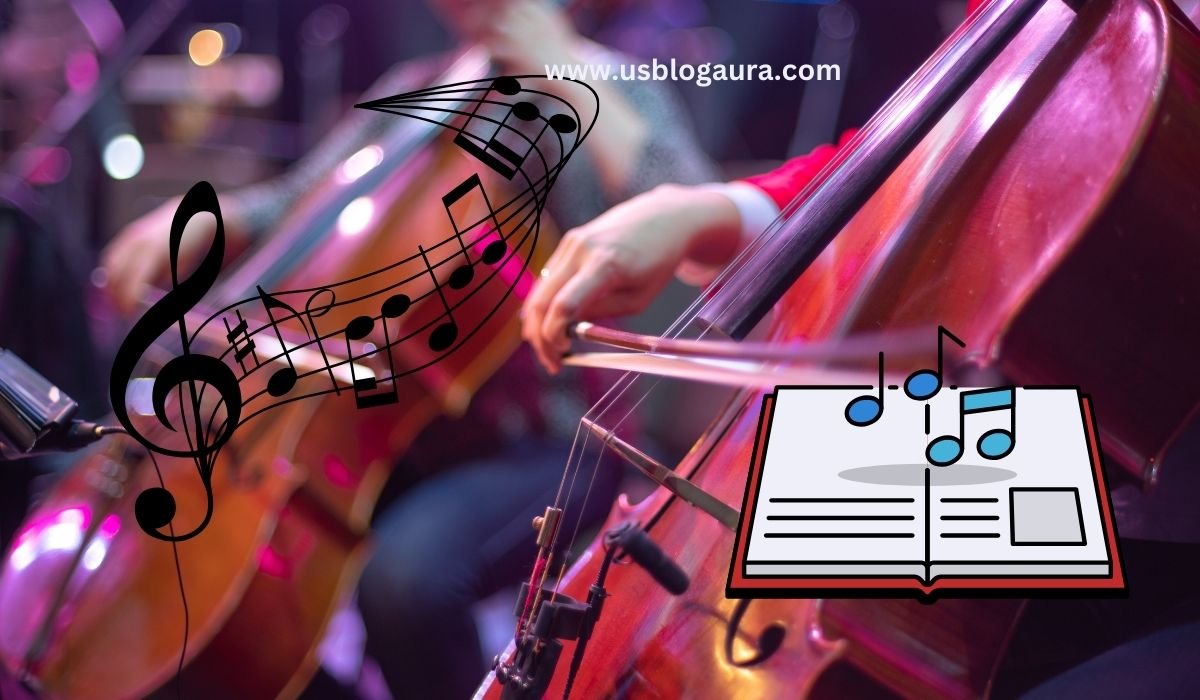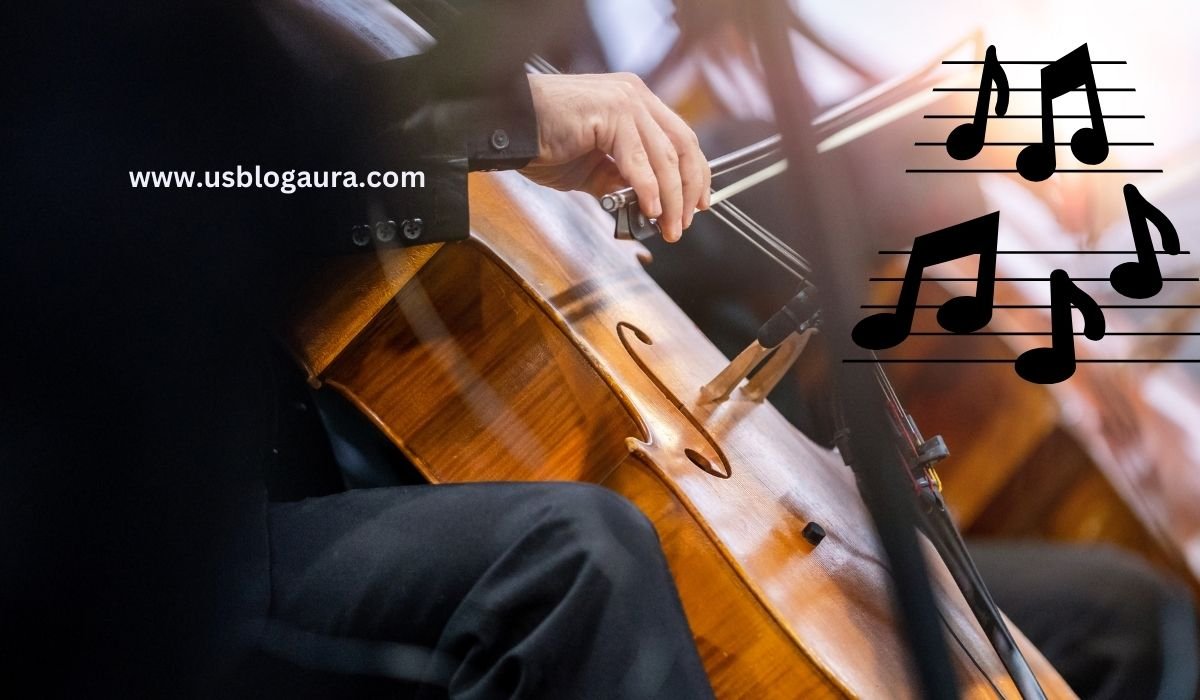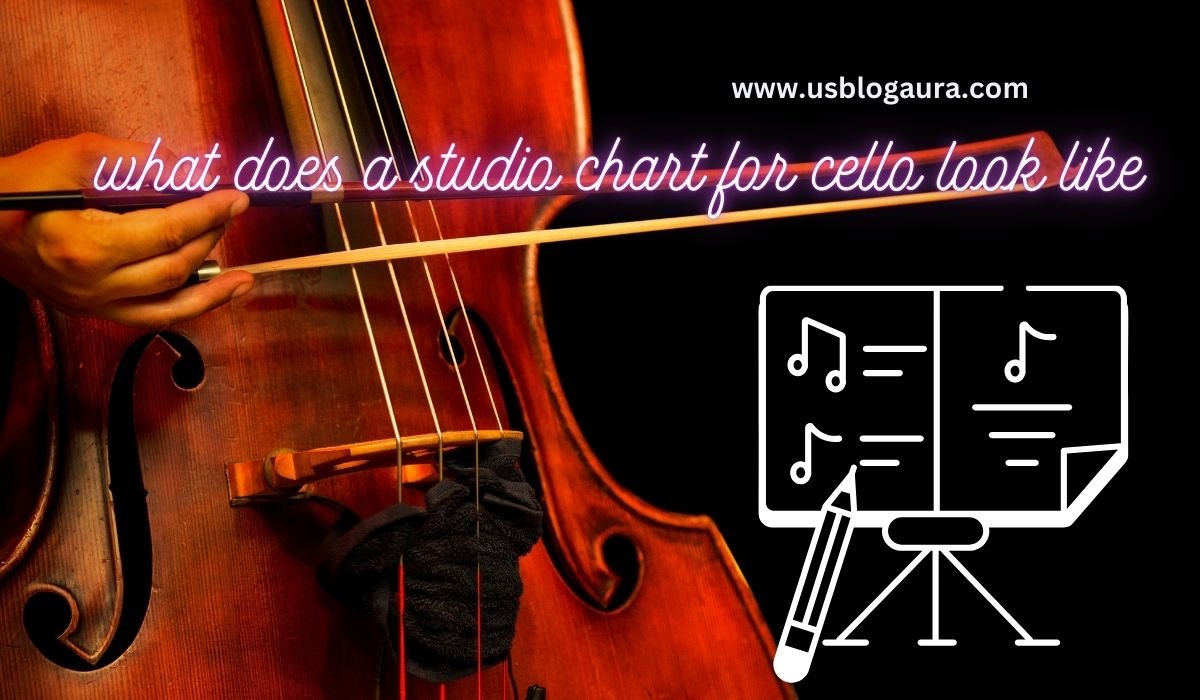A studio chart in music production is an essential guide that facilitates a musician in negotiating the esoteric complexities of performance. Such a chart is utilized in film scores, what does a studio chart for cello look like orchestral arrangements, and collaboration works. A well-structured studio chart will ensure that every note and nuance is communicated duly. This guide will go deep into the meaning of a studio chart for cello, specifying the parts, visual design elements, and practical applications.
Apart from improving performance quality, studio charts help facilitate the creative workflow between the composer, arranger, and performer. This breakdown of the major ingredients aims at demystifying and explaining the nature and the intention of these essential music tools.
Why Studio Charts Are Important

Studio charts are important for several reasons:
- Clarity in communication: They ensure everyone in a musical project, what does a studio chart for cello look like from the conductor to the musicians, is communicated clearly on how to perform.
- Efficiency during rehearsals: An orderly chart leaves less rehearsal time because the musicians get to understand the plan and what the piece requires easily.
- Cooperation: When charts are applied, collaboration is easier in projects as each musician understands their part of the larger ensemble.
The key elements in a studio chart for cello
It’s more than a simple visual reference; it’s a detailed blueprint from which musicians will get all the necessary information to play the piece correctly. Here are the main constituents that typically constitute a studio chart for cello.
Instrument Staves
The main characteristic of any studio chart is staves, which provide a framework in which written music will be written. In a cello chart, you normally find:
- Clef: Almost all cello music is notated in the bass clef, but you should also be familiar with treble clef, especially for pieces that go up into higher registers. Learn how to read in each clef.
- Staff: In arrangements with multiple cello or other what does a studio chart for cello look like instruments, you’ll see additional staves to offer cues for every part.
Cue Notes and Markings
Cue notes are additional marks that will tell the musician which pieces are significant parts of the music, among others such as:
- Cue for Rhythm: An indication of the rhythm of a specific portion will enable the musicians to play in line with the whole group.
- Cue for Harmony: Notes showing the harmony. They can enable the cellist to establish how his part falls with the rest of the setting.
Dynamics and Articulations
The musician will need to understand how to portray the music’s intended emotion and character by understanding dynamics and articulations.
- Dynamics: For instance, p for piano (soft), f for forte (loud), and a whole range of in-between markings including mp, or mezzo-piano (moderately soft), and ff, fortissimo (very loud). Dynamics depict how the musician should play either loudly or softly.
- Articulations include symbols such as staccato what does a studio chart for cello look like legato (smooth and connected notes), and accents that shape the kind of performance being given.
Rhythmic Notation and Note Values
Accurate performance is achieved in the core rhythm section of a studio chart.
- Note Values: The comprehension of the whole, half, and quarter notes forms the foundation of reading music.
- Time Signatures: The time signature informs the performer what meter the piece is in and, thus, whether the music will be phrased or played.
Bowings and Fingerings
In the strings, bowings and fingerings are the vital components for the right sound in a cello string instrument.
- Bow Markings: Annotations such as up-bow and down-bow ensure an even sound.
- Fingerings: Guidance on which fingers to pluck the strings can make complex passages easier to play.
Sectional divisions
Sectional divisions facilitate the cello player’s understanding of what does a studio chart for cello look like orchestral music:
Divisi sections If the score splits the cello section into various parts, subdivision sections inform it in the score to maximize the harmonic density.
- Unison Lines: Parts where violoncelli play the same notes strengthen the musical meaning.
Tempo Markings
Tempo markings convey the speed of the composition and, in most cases, are written in beats per minute (BPM). Some common terms include:
- Allegro: Fast with a lively spirit.
- Andante: A medium tempo that is often understood to reflect walking pace.
- adagio: Slow, leisurely.
Performance Notes
Performance notes are additional instructions that give more detailed descriptions for performers, such as:
- Special Techniques: It becomes possible to give a feel to a performance by specifying indrawing pizzicato or harmonics on the string.
- Interpretive Direction: Notes relating to phrasing, emotive intent, or style serve as directions for the performers to present a performance corresponding to the what does a studio chart for cello look like composer’s ideas.
Also read: Filler between bathroom tiles nyt
Studio Chart Visual Design
The visual design of a studio chart is as important as its musical content. A clear and well-organized chart makes it more readable and performs better.
Layout and Spacing
- Consistent Margins: A good chart has consistent margins so that the notes and annotations are easily read without overlapping.
- Proper Spacing Between Staves: Such spacing avoids visual clutter and supports quick visualization on the musician’s part during performance.
Font Choices
- Readable Fonts: Annotations should be written in what does a studio chart for cello look like readable fonts thatthat can easily be read during performance.
- Size differences: Whatever information the performer needs to know, like some dynamics or cues, should appear in big or bold text.
Color Coding
Color coding can sometimes be useful in a modern studio chart for visual clarity:
- Dynamic Markings: Any different color for each dynamic level can quickly show changes in volume.
- Articulations and Cues: Color will enhance articulations andd highlight significant performance information.
Symbols and Notations
It is helpful to be familiar with the vocabulary of symbols what does a studio chart for cello look like and notations that are commonly used in cello studio charts:
- Standard Notation: Familiarity with standard notation enables musicians to read chartsand know what is expected of them as a performance.
- Special Symbols: Special symbols, including harmonics and pizzicato, will illustrate sophisticated techniques.
Interpreting Sheet Music for the Cello
Before approaching studio charts in detail, basic knowledge of the cello sheet music structure is necessary because studio charts mainly provide further development on basic knowledge.
Clefs and Staves
Most of the the time, cello music is written in bass clef; however, reading treble clef enables the interpretation of some compositions. Being able to read both clefs constitutes a vast expertise for those musicians who can accomplish multilateral tasks.
Note Values and Rhythms
Identification of note values and rhythms is a simple part of being a cellist, including the performance of a sheet concerto at any vigorous tempo to a slow lyrical melody- rhythmic structure must be within your reach.
Notations on the Cello in Studio Charts
Clefs and Staves
As mentioned earlier, it is completely indispensable to know clefs. The bass clef would describe the cello’s range, whereas the treble clef could be applied what does a studio chart for cello look like sometimes for more contemporary works or arrangements.
Rhythm and Articulation
Reading rhythmic notation will allow the cellist to perform the music accurately. This would also include knowing the various articulations that influence phrasing and handling of emotion in a piece.
Cue Notes and Markings
These notations help musicians stay in tune with the larger sound of the ensemble, especially with complex pieces. Cues can refer to important rhythmic patterns or transitions that should be accentuated.
Reading Orchestral Cello Parts
There are times in which cellists read orchestral parts. With that, one would have to be aware of the following aspects:
Bowings and Articulations
In orchestral scores, proper bowing and articulations change the timbre of sound. Of course, that would be the intent of the conductor and the logic behind the piece in mind for the what does a studio chart for cello look like musician to do it right.
Dynamics and Expressions
The dynamic markings and expressive indications allow cellists to project the composer’s intention into the performance, making it richer for the emotional side of the music.
Key Signatures
Key signatures inform the musician or performer of where the tonal center of a piece resides and which notes are sharp or flatted throughout that piece. Knowledge of key signatures is necessary to properly read and interpret parts effectively.
Form and Texture Analysis
In terms of form and structure, knowing a piece will include verses, choruses, or a bridge; cellists know when to look for changes in dynamics, tempo, and articulation.
Orchestrating for the Cello Section
It is good to know how to note the divisi and unison lines in a cello section.
Divisi and Unison Lines
- Divisi: The division of the cellos to play two or more parts can create complexity in the harmonic texture of the piece.
- Unison Lines: Unison represents thematic material and can be what does a studio chart for cello look like very effective.
The Role of the Cello Section in Orchestration
One must first establish its part in an orchestral setting to understand what might be arranged well for the cello. Cellos mainly support harmonies and, at other times, carry out melodies. This creates a conflicting need to balance their use in arrangements so that they are used to support harmony and melody but are not drowned by other sounds.
Based on the Cello’s Range and Abilities
Knowing what can be done with the cello in terms of range and what does a studio chart for cello look like technical capabilities is important. A composer should be aware of the following.
- Playing in the High Registers In composition pieces that take advantage of the higher registers, cellists often find it challenging to play accurately, especially about intonation and position placing.
- Technical Passages Composition makes use of complicated fingerings or light rapid passages. However, one must not forget that clarity and expression are easily lost when the cellist asks too much.
- Cello section arrangements should effectively what does a studio chart for cello look like encompass a creative touch with technical knowledge. Here are some guidelines on how to create effective cello parts:
- Balance Melody and Harmony: The cello sections should complement the melody without overpowering it. Provide a counterpoint to add richness to the arrangement.
- Texture: You can create varied textures by experimenting with bowings, articulations, and dynamics within the cello section.
- Introduce Call-and-Response Patterns: Create dialogue among the cello parts to drive mutual engagement and musicality.
Studio Charts for Cello: Applications in the Studio
Recording Sessions
A prepared studio chart facilitates easier recording inside the four walls of a recording studio by simplifying the entire process:
- Rapid Reference: Charts allow musicians to easily refer to them easily, not delaying recording unnecessarily
- Simplified Communication: Enough markings and cues make communication easier between the producer, conductor, and musicians
Live Performances
Studio charts maintain what does a studio chart for cello look like coherencies and consistencies in live performances. Important areas in this regard are as follows:
- Visual Control: The musician can rely on charts to draw visual references, thus ensuring they do not drift from the group.
- Adjustability: Charts can be altered to accommodate different performance settings. For example, their settings. There may be a recital performance with only one performer or an orchestral performance with a large ensemble.
Instructional Uses
Studio charts are also extremely effective in classroom instructional settings. These can prove helpful for demonstrating:
- Demonstrate Musical Concepts: Charts will be useful to teachers’ concepts, such as dynamics, articulations, what does a studio chart for cello look like and phrasing. Students in Performance Practice: Charts will prepare students to understand the importance of joint responsibility when playing together as an ensemble. It can, therefore, be likened to real-life musical experiences.
Composition and Arrangement
Composers, as well as arrangers, will find the studio chart helpful in the following:
- Visualize Complicated Ideas: Charts allow composers to visualize how different parts interact, thus making it easier to manage complicated arrangements.
- Test Ideas: Through this charting of ideas on paper, the composers can test their effectiveness before getting on stage for rehearsal.
Challenges While Using Studio Charts

Even though studio charts are a very useful tool for musicians, there are several challenges that musicians might encounter when using them:
Complexity of Notation
It might be too complex for most what does a studio chart for cello look like emerging musicians and have many different symbols and notations. One should understand musical notation for effective interpretation of studio charts.
Adaptation of Changes
Arrangements may change spontaneously in live performances. The artists are supposed to adapt and be prompt to change the alterations made in the studio chart.
Miscommunication
Miscommunication results in confusion during the performances. It is of utmost importance that everyone gets the latest version of the chart and knows the intent of the conductor.
FAQS
What does a studio chart for a cello look like?
A studio sheet for cello includes many staves for different parts, cue notes, dynamic markings, bowing directions, and articulation symbols. The chart is installed for clarity in performance to keep track smoothly during a show.
How is score notation composed of cello sheet music?
Cello sheet music notated in the bass clef indicates note values, rhythmic patterns, and dynamics. The score often contains parts for different instruments, which, in some spots, might indicate divisi or unison playing.
What does a studio chart contain?
The primary components of a studio chart are the instrument staves, cue notes, dynamics, articulations, rhythmic notation, and bowing and fingerings. Each helps ensure the performance is correct and that other musicians do it right.
How would you read a studio chart for cello?
Interpreting a studio chart involves perusing symbols and notations, ranging from clefs, dynamics, articulations, and tempo markings. All this knowledge will allow musicians to correctly interpret the music and express the appropriate performance style.
What do I need to know when creating a studio chart for cello?
Consider having an evident notation, uniform space, and all performance instructions while creating a chart for a studio. Customize the chart according to what the musicians need and what does a studio chart for cello look like type of piece they are working on.
Conclusion
Understanding what a studio chart for cello looks like is important to the performer and arranger. Such charts help improve communication inside ensembles and improve the whole musical outcome. This lesson will familiarize you with the key elements, visual design elements, and practical applications of studio charts that will better equip you to navigate the complexities of performance on a cello.
With the dynamic landscape of music going on and on, what does a studio chart for cello look like the importance what does a studio chart for cello look like continues to be important so that artists can give their best performance. Whether a seasoned cellist or a budding musician, it’s imperative to learn reading and interpreting studio charts as an avenue toward success in the music industry
Also read: trau buoc ghet trau an. pronunciatiom

